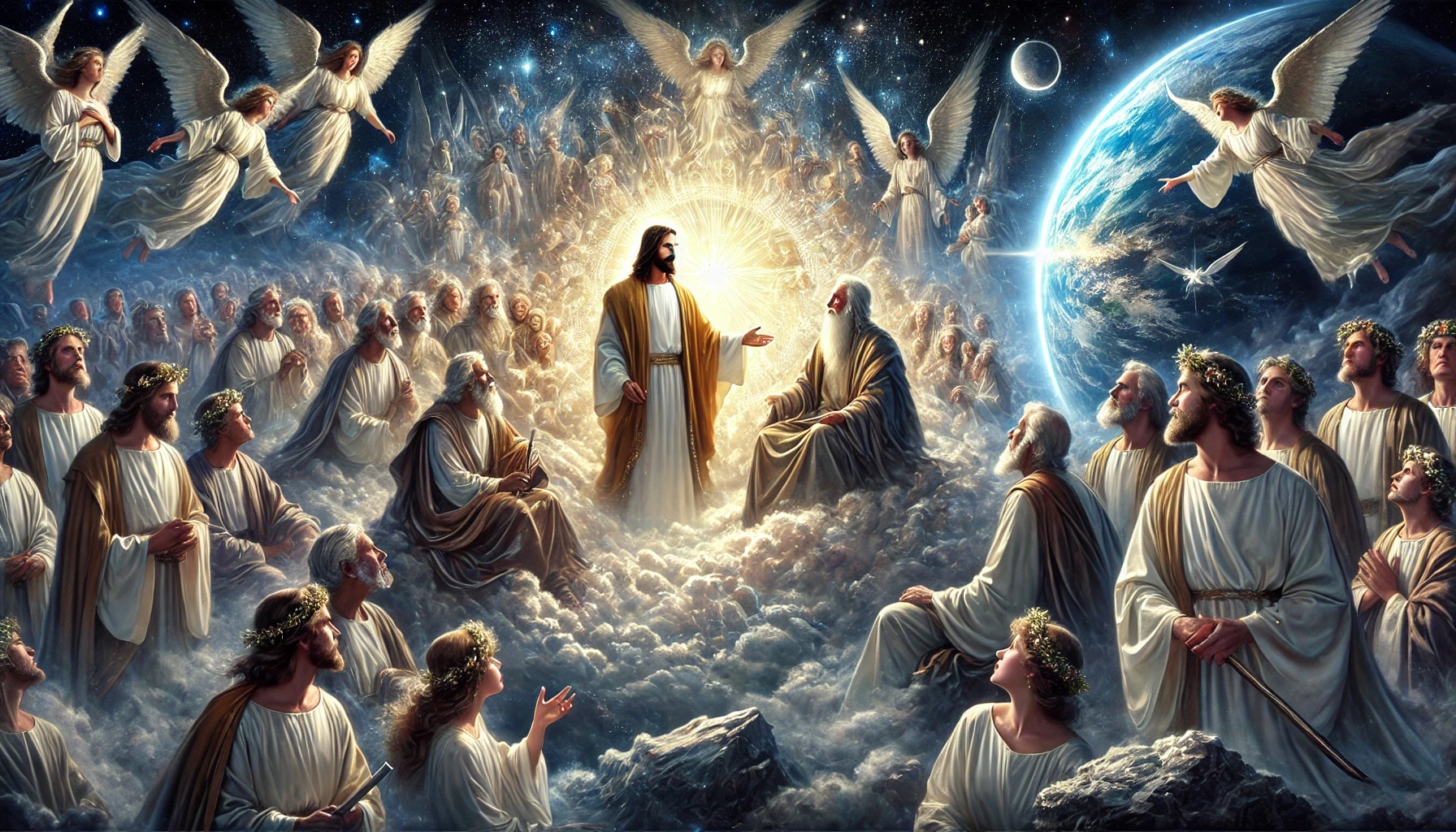“Perché io sono l'Eterno che ti guarisce”. 📖 Esodo 15:26
—
💌 Apri la porta del tuo cuore
🗣 Speaker: Valentina Piazza Source: https://www.youtube.com/watch?v=K9qDDDGF-eU
Lesson 8.In the Psalms: Part 1 | 8.3 Law in Our Hearts | ALLUSIONS, IMAGES, SYMBOLS | LIVING FAITH
8: In the Psalms – Part 1 — Singing with Inspiration
To learn of the “Allusions, Images and Symbols” in Bible Prophecy we are really in great need of saying to God
Give Me The Bible – Hymn 272 so we are able to learn with His abundant help. This will be our theme for this, the second quarter of Bible Study, 2025.
What our High Priest does for us on Sunday is sung in:
Hymn 180 – O Listen To Our Wondrous Story,
Hymn 177 – Jesus, Your Blood And Righteousness,
Hymn 178 – The Unveiled Christ, and
Hymn 179 – The Wonders Of Redeeming Love.
Monday give us lots of information “On Mount Zion”. Please sing
Hymn 450 – Beautiful Zion as a reminder of our study on this day.
With God’s “Law In Our Hearts” (Tuesday), we learn so much of God’s glory as we do in
Hymn 341 – To God Be The Glory.
It is with great joy we worship our wonderful God (Wednesday):
Hymn 83 – O Worship The King, and
Hymn 12 – Joyful, Joyful, We Adore Thee.
Just as Isaiah was ready saying “Here am I! Send me”, may we go and be
Working, O Christ, With Thee – Hymn 582, so that we may
The Son Of God Proclaim – Hymn 411.
Please continue to search the scriptures this week to be blessed and to bless others.
To learn unknown hymns, you will find the accompaniment music for each one at: https://sdahymnals.com/Hymnal/
Another great resource is for when there is a hymn you wish to sing but can’t find it in your hymnal. Go to https://www.sdahymnal.org/Search and in the search bar type a special word in that is in the hymn. I am sure you will be amazed at the help you will be given.
2 Timothy 2:15 KJV – “Study to shew thyself approved unto God, a workman that needeth not to be ashamed, rightly dividing the word of truth.”
 (0)
(0)Source: https://ssnet.org/blog/8-in-the-psalms-part-1-singing-with-inspiration/
20.05.2025 – Genesis Chapter 34 | BELIEVE HIS PROPHETS
 May 20, 2025
May 20, 2025
 DAILY BIBLE READING
DAILY BIBLE READING
 Genesis 34 – Dinah and the Massacre at Shechem
Genesis 34 – Dinah and the Massacre at Shechem
══════════════════════════════════════════════
 Bible Text – Genesis 34 (KJV)
Bible Text – Genesis 34 (KJV)
Source: https://fulfilleddesire.net/20-05-2025-genesis-chapter-34-believe-his-prophets/
8: In The Psalms – Part 1 — Teaching Plan
Key Thought : Among the Psalms we can find messages that speak to us. We can discover how relevant these are for us who live in the time of the end.
May 24, 2025
1. Have a volunteer read Hebrews 9:11-15.
- Ask class members to share a short thought on what the most important point is in this passage.

- What does this text tell us about what Christ is doing for us in the heavenly sanctuary?
- Personal Application: What does it mean to you that we are living in the judgment period of Earth’s history? How does that affect you in your life? Share your thoughts.
- Case Study: One of your relatives states, “I thought that when Jesus died on the cross, that finished the whole plan of salvation. What is this heavenly sanctuary imagery all about? I don’t understand it.” How would you respond to your relative?
2. Have a volunteer read Exodus 33:18-23. 34:1-7, Psalm 119:55.
- Ask class members to share a thought on what the most important point in this text is.
- When Moses asked to see God’s glory, what did God show him, and how did God proclaim His name to Moses?
- Personal Application: Why does our religious effort toward sanctification and holiness help make us more sensitive toward others and our ethical treatment of them? Share your thoughts.
- Case Study: One of your friends states, “If we are saved by grace and not by the law, then why do you Adventists stress the importance of the law in your Christian walk? Aren’t you putting yourself under the yoke of the law?” How would you respond to your friend?
3. Have a volunteer read Psalm 5 and Revelation 14:1-12
- Ask class members to share a short thought on what the most important point in this text is.
- Compare the language of Psalm 5 with Revelation 14. What similarities do you see?
- Personal Application: How would you feel standing before God in the judgment facing everything that you have ever done, said, or thought, exposed before Him and everyone else? What does this tell you about your need for Christ’s righteousness and covering? Share your thoughts.
- Case Study: One of your neighbors states: “Why does this text say that the saints have the faith of Jesus and keep the commandments of God? I thought faith negated the law of obedience. This is confusing.” How would you respond to your neighbor?
4. Have a volunteer read Psalm 51:7-15.
- Ask class members to share a thought on what the most important point in this text is.
- What does David promise to do after he has been pardoned and purged from his sin?.
- Personal Application: Think of the three angels’ messages that are called the everlasting gospel. How is the gospel foundational to each of these three messages? Share your thoughts.
- Case Study: Think of one person who needs to hear a message from this week’s lesson. Tell the class what you plan to do this week to share with them.
(Truth that is not lived, that is not imparted, loses its life-giving power, its healing virtue. Its blessings can be retained only as it is shared. ”Ministry of Healing, p. 148).
 (0)
(0)Source: https://ssnet.org/blog/8-in-the-psalms-part-1-teaching-plan/
The Life-Changing Truth That a Church in Ireland Found Together | AWR360°
The harvest is ripe in Ireland, and lives are being transformed. A Pentecostal pastor attending a Saint Patrick’s Day Parade received a booklet on Christianity and was later drawn to an evangelistic series titled “Religion: What Went Wrong.” His entire church canceled their programs to attend, and the message of the Sabbath made a profound impact on their hearts. Several attendees are already seeking a new path forward. Discover how truth is changing lives and reigniting faith. Like, comment and subscribe for more stories of transformation. #SabbathTruth #FaithAndHope #LivesChanged Source: https://www.youtube.com/watch?v=YOn2Jcl6Yc4
If I Have God, I Have Everything
In the presence of God, you’ll find everything you need. Comment AMEN if you believe this. Source: https://www.youtube.com/watch?v=blQmKTKu6bo
The Church Takes Action Amid the Tentative India-Pakistan Ceasefire

19 May 2025 | A fragile ceasefire has paused the drone war between Pakistan and India. However, the threat for Adventist congregations is still simmering. What began as allegations and accusations has led to devastating attacks through air strikes, causing the deaths of 36 people and injuring 57 more in Pakistan and Pakistan-administered Kashmir. Adventist […] Source: https://atoday.org/the-church-takes-action-amid-the-tentative-india-pakistan-ceasefire/
What do Jesus, the disciples, and you have in common?
"I Will Go" and Total Member Involvement mean something deeper when you consider that Jesus also was willing to GO. He was willing to be involved. He was willing to leave His home, even putting Himself in danger to share God's love with others—with US. Jesus went. Will you? Comment "I WILL GO" below and we'll pray for your personal ministry today. Source: https://www.youtube.com/watch?v=-Du4KgH1ChI
Aunty, I’ve encountered some passages in the Bible that directly contradict others. How can that be?

19 May 2025 | Dear Aunt Sevvy, In Luke 21 where Jesus is talking about the destruction of Jerusalem and the end of time, he said, “They will put some of you to death” (v.16), followed by “not a hair of your head will perish” (v.18). What did Jesus mean by these seemingly contradictory statements? […] Source: https://atoday.org/aunty-ive-encountered-some-passages-in-the-bible-that-directly-contradict-others-how-can-that-be/
- « Previous Page
- 1
- …
- 209
- 210
- 211
- 212
- 213
- …
- 4667
- Next Page »



 Lesson 8.In the Psalms: Part 1
Lesson 8.In the Psalms: Part 1
 Introduction
Introduction

 Questions & Answers
Questions & Answers





 Introduction
Introduction Commentary
Commentary Summary
Summary Application Today
Application Today ~~~~~
~~~~~
 May 11–17, 2025
May 11–17, 2025